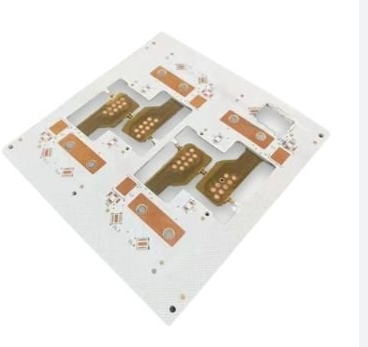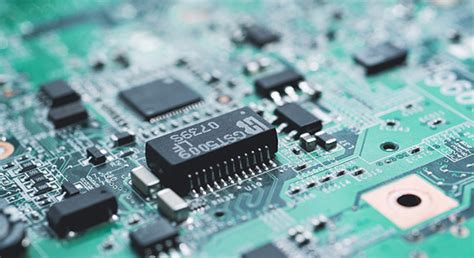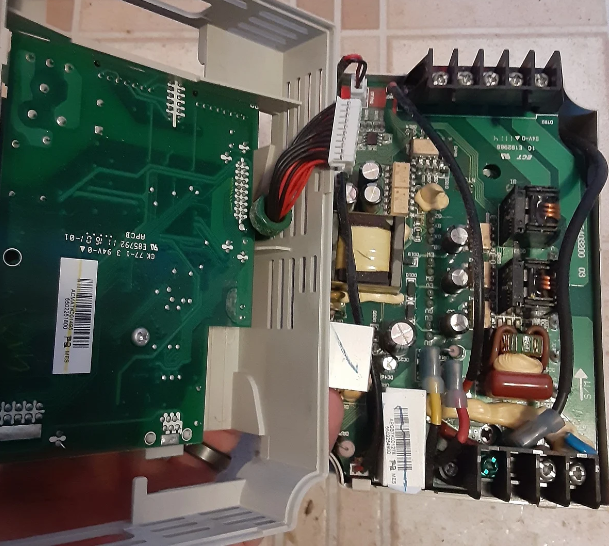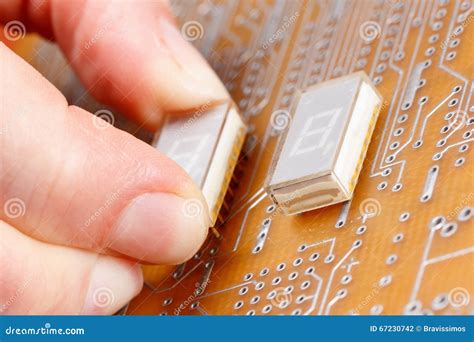White flexible pcb
Advantages Of Using White Flexible PCBs In Modern Electronics
White flexible printed circuit boards (PCBs) have emerged as a significant innovation in the realm of modern electronics, offering a multitude of advantages that cater to the evolving demands of contemporary technology. These advanced PCBs are characterized by their flexibility, lightweight nature, and the distinctive white color, which collectively contribute to their growing popularity in various applications. The benefits of using white flexible PCBs are manifold, and understanding these advantages can provide valuable insights into their potential impact on the electronics industry.
One of the primary advantages of white flexible PCBs is their exceptional flexibility.
Unlike traditional rigid PCBs, flexible PCBs can be bent, folded, and twisted without compromising their functionality. This flexibility allows for more creative and compact designs, enabling engineers to develop innovative electronic devices that are both lightweight and space-efficient. For instance, in wearable technology, the ability to conform to the contours of the human body is crucial, and white flexible PCBs provide the perfect solution by offering the necessary adaptability without sacrificing performance.
In addition to their flexibility, white flexible PCBs are also known for their lightweight properties.
The reduction in weight is particularly beneficial in applications where minimizing mass is essential, such as in aerospace and automotive industries. By incorporating white flexible PCBs, manufacturers can achieve significant weight savings, which in turn can lead to improved fuel efficiency and overall performance. Furthermore, the lightweight nature of these PCBs makes them ideal for portable electronic devices, where every gram counts in enhancing user convenience and device portability.
Another notable advantage of white flexible PCBs is their superior thermal management capabilities.
The white color of these PCBs is not merely an aesthetic choice; it plays a crucial role in reflecting heat away from the components. This reflective property helps in maintaining lower operating temperatures, thereby enhancing the reliability and longevity of electronic devices. Effective thermal management is particularly important in high-performance applications, where excessive heat can lead to component failure and reduced efficiency. By utilizing white flexible PCBs, manufacturers can ensure that their devices operate within optimal temperature ranges, thereby improving overall performance and durability.
Moreover, white flexible PCBs offer excellent electrical performance, which is a critical factor in the design and functionality of modern electronic devices.
These PCBs are designed to provide reliable electrical connections while maintaining signal integrity, even in complex and compact configurations. The use of advanced materials and manufacturing techniques ensures that white flexible PCBs can handle high-frequency signals and power requirements, making them suitable for a wide range of applications, from consumer electronics to industrial automation.
In conclusion, the advantages of using white flexible PCBs in modern electronics are numerous and significant. Their exceptional flexibility, lightweight properties, superior thermal management, and excellent electrical performance make them an ideal choice for a variety of applications. As the demand for more compact, efficient, and reliable electronic devices continues to grow, white flexible PCBs are poised to play a crucial role in shaping the future of the electronics industry. By leveraging the unique benefits of these advanced PCBs, manufacturers can develop innovative solutions that meet the ever-evolving needs of consumers and industries alike.

Manufacturing Process Of White Flexible PCBs: A Step-By-Step Guide
The manufacturing process of white flexible PCBs (Printed Circuit Boards) is a meticulous and intricate procedure that demands precision and expertise. This process begins with the selection of appropriate materials, which is crucial for ensuring the flexibility and durability of the final product. Typically, polyimide or polyester films are chosen due to their excellent thermal stability and mechanical properties. These materials serve as the substrate upon which the circuit is built.
Once the substrate is selected, the next step involves the application of a conductive layer, usually copper, onto the flexible substrate.
This is achieved through a process known as lamination, where the copper foil is bonded to the substrate using heat and pressure. The lamination process must be carefully controlled to avoid any defects that could compromise the integrity of the PCB.
Following lamination, the design of the circuit is transferred onto the copper layer through a process called photolithography.
In this step, a photosensitive resist is applied to the copper surface, and the desired circuit pattern is exposed onto the resist using ultraviolet light. The areas of the resist that are exposed to the light harden, while the unexposed areas remain soft and can be washed away, revealing the underlying copper.
The next phase involves the etching process, where the exposed copper is removed using a chemical solution, leaving behind the desired circuit pattern.
This step requires precise control to ensure that only the unwanted copper is etched away, preserving the integrity of the circuit design. After etching, the remaining photoresist is stripped away, revealing the clean copper traces that form the circuit.
To enhance the performance and reliability of the white flexible PCB, a protective layer, often referred to as a solder mask, is applied. This layer not only protects the copper traces from oxidation and environmental damage but also prevents solder bridges during the assembly process. The solder mask is typically applied using a screen-printing technique, followed by curing to harden the protective layer.
Subsequently, the PCB undergoes a drilling process to create holes for component leads and vias, which are essential for establishing electrical connections between different layers of the circuit. Advanced drilling techniques, such as laser drilling, are often employed to achieve the high precision required for modern flexible PCBs.
Once the drilling is complete, the PCB is subjected to a plating process to deposit a thin layer of metal, usually copper, onto the walls of the drilled holes.
This step ensures reliable electrical connections between the different layers of the PCB. The plated holes are then inspected for quality and consistency to ensure they meet the required specifications.
The final stages of the manufacturing process involve the application of surface finishes, such as gold or silver, to the exposed copper pads. These finishes enhance the solderability and corrosion resistance of the PCB, ensuring long-term reliability. The PCB is then subjected to rigorous testing to verify its electrical performance and mechanical integrity.
In conclusion, the manufacturing process of white flexible PCBs is a complex and highly controlled procedure that involves multiple steps, each critical to the overall quality and performance of the final product. From material selection and lamination to photolithography, etching, and finishing, each phase requires meticulous attention to detail and precision. By adhering to these stringent manufacturing processes, manufacturers can produce high-quality white flexible PCBs that meet the demanding requirements of modern electronic applications.

Applications Of White Flexible PCBs In Wearable Technology
White flexible PCBs, or printed circuit boards, have emerged as a pivotal component in the rapidly evolving field of wearable technology. These advanced circuit boards offer a unique combination of flexibility, durability, and aesthetic appeal, making them particularly well-suited for integration into wearable devices. As the demand for more sophisticated and user-friendly wearable technology continues to grow, the applications of white flexible PCBs are becoming increasingly diverse and impactful.
One of the primary applications of white flexible PCBs in wearable technology is in the development of smartwatches.
These devices require compact and flexible circuitry to accommodate their small form factor while maintaining high performance. White flexible PCBs provide the necessary flexibility to fit within the curved and compact designs of smartwatches, ensuring that the electronic components can be seamlessly integrated without compromising functionality. Additionally, the white color of these PCBs enhances the aesthetic appeal of the device, aligning with the sleek and modern design preferences of consumers.
Transitioning from smartwatches, another significant application of white flexible PCBs is in fitness trackers.
These devices are designed to be worn continuously, often during rigorous physical activities. Therefore, the circuit boards used in fitness trackers must be both flexible and durable to withstand constant movement and potential impacts. White flexible PCBs meet these requirements by offering a robust yet pliable solution that can endure the stresses of daily wear and tear. Moreover, the white color helps in reflecting heat, which can be beneficial in maintaining the device’s temperature during prolonged use.
In addition to smartwatches and fitness trackers, white flexible PCBs are also instrumental in the development of smart clothing.
This innovative application involves embedding electronic components into fabrics to create garments that can monitor various physiological parameters, such as heart rate, body temperature, and muscle activity. The flexibility of white PCBs allows them to be woven into the fabric without compromising the comfort or wearability of the clothing. Furthermore, the white color of the PCBs can be easily concealed within the fabric, ensuring that the technology remains unobtrusive and aesthetically pleasing.
Moving beyond personal health and fitness, white flexible PCBs are also finding applications in medical wearables.
These devices, which include continuous glucose monitors and wearable ECG monitors, require highly reliable and flexible circuitry to provide accurate and consistent readings. The use of white flexible PCBs in these medical devices ensures that they can conform to the contours of the human body, providing a comfortable and secure fit. Additionally, the white color of the PCBs can help in reducing the visibility of the device, making it more discreet for the user.
Furthermore, white flexible PCBs are being utilized in the development of augmented reality (AR) and virtual reality (VR) headsets.
These devices require intricate and flexible circuitry to support their complex functionalities while maintaining a lightweight and comfortable design. White flexible PCBs offer the necessary flexibility and reliability, ensuring that the electronic components can be seamlessly integrated into the headset. The white color also contributes to the overall aesthetic appeal of the device, aligning with the sleek and futuristic design trends in the AR and VR industry.
In conclusion, the applications of white flexible PCBs in wearable technology are vast and varied, spanning from consumer electronics to medical devices. Their unique combination of flexibility, durability, and aesthetic appeal makes them an ideal choice for integrating advanced electronic components into wearable devices. As wearable technology continues to advance, the role of white flexible PCBs will undoubtedly become even more significant, driving innovation and enhancing the functionality and design of these cutting-edge devices.
Comparing White Flexible PCBs To Traditional Rigid PCBs: Pros And Cons
White flexible PCBs, or printed circuit boards, have emerged as a significant innovation in the electronics industry, offering a range of advantages over traditional rigid PCBs. To understand the benefits and drawbacks of white flexible PCBs, it is essential to compare them with their rigid counterparts, considering various factors such as design flexibility, durability, cost, and application suitability.
One of the primary advantages of white flexible PCBs is their inherent design flexibility.
Unlike rigid PCBs, which are confined to a fixed shape and size, flexible PCBs can be bent, folded, and twisted to fit into complex and compact spaces. This adaptability makes them ideal for applications where space constraints are a critical consideration, such as in wearable technology, medical devices, and compact consumer electronics. The ability to conform to irregular shapes without compromising functionality provides engineers with greater design freedom, enabling the creation of innovative and efficient electronic products.
In addition to design flexibility, white flexible PCBs offer enhanced durability.
Traditional rigid PCBs are prone to damage when subjected to mechanical stress or vibration, which can lead to circuit failure. In contrast, flexible PCBs are designed to withstand such stresses, making them more reliable in demanding environments. The use of flexible materials such as polyimide or polyester in their construction allows these PCBs to endure repeated bending and flexing without breaking, thus extending the lifespan of the electronic device.
However, it is important to consider the cost implications when comparing white flexible PCBs to traditional rigid PCBs.
The manufacturing process for flexible PCBs is generally more complex and requires specialized equipment and materials, which can result in higher production costs. Additionally, the design and prototyping phases may take longer due to the need for precise engineering to ensure the PCB can flex without causing electrical or mechanical issues. Consequently, while flexible PCBs offer numerous benefits, they may not be the most cost-effective solution for all applications, particularly those with budget constraints.
Another factor to consider is the thermal management capabilities of white flexible PCBs compared to rigid PCBs.
Rigid PCBs typically have better heat dissipation properties due to their thicker and more robust construction. In contrast, flexible PCBs, being thinner and made from materials with lower thermal conductivity, may require additional thermal management solutions to prevent overheating. This can add to the overall complexity and cost of the design, particularly in high-power applications where efficient heat dissipation is crucial.
Despite these challenges, the application suitability of white flexible PCBs cannot be overlooked.
Their lightweight and thin profile make them ideal for use in portable and wearable devices, where minimizing weight and bulk is essential. Furthermore, the aesthetic appeal of white flexible PCBs can enhance the overall appearance of consumer electronics, making them more attractive to end-users. This is particularly relevant in industries where product design and visual appeal are critical factors in consumer decision-making.
In conclusion, while white flexible PCBs offer significant advantages in terms of design flexibility, durability, and application suitability, they also present certain challenges, including higher production costs and potential thermal management issues. When deciding between flexible and rigid PCBs, it is crucial to carefully evaluate the specific requirements of the application, considering factors such as space constraints, mechanical stress, budget, and thermal performance. By weighing the pros and cons, engineers and designers can make informed decisions that optimize the performance and reliability of their electronic products.






